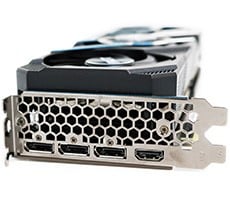
|
|
Performance Comparisons with Half Life 2: Lost Coast
|
|
Details: http://www.half-life2.com/
|
|
 Half-Life
2:
Half-Life
2:
Lost Coast
|
Thanks to the dedication of hardcore PC gamers and a huge mod-community, the original Half-Life became one of the most successful first person shooters of all time. So, when Valve announced Half-Life 2 was close to completion in mid-2003, gamers the world over sat in eager anticipation. Unfortunately, thanks to a compromised internal
network
, the theft of a portion of the game's source code, and a tumultuous relationship with the game's distributor, Vivendi Universal, we all had to wait until November '04 to get our hands on this classic. In this test we benchmarked the add-on 'Lost Coast' at 1024x768 with No AA and No Anisotropic Filtering enabled, using the built-in video stress test.
|

With Half-Life 2 Lost Coast, both 690G based boards managed the best scores with integrated graphics, holding a firm lead over the nForce 430 models. Once discrete graphics was factored in, the differences became less significant, with all four boards performing within 3 frames per second of each other at most.

|
|
Performance Comparisons with F.E.A.R v1.08
|
|
More Info: http://www.whatisfear.com/us/
|
|
 F.E.A.R
F.E.A.R
|
One of the most highly anticipated titles of 2005 was Monolith's paranormal thriller F.E.A.R. Taking a look at the game's minimum system requirements, we see that you will need at least a 1.7GHz Pentium 4 with 512MB of system memory and a 64MB graphics card in the Radeon 9000 or GeForce4 Ti-classes or better, to adequately run the game. Using the full retail release of the game patched to v1.07, we put the graphics cards in this article through their paces to see how they fared with a popular title. Here, all graphics settings within the game were set to their maximum values, but with soft shadows disabled (Soft shadows and anti-aliasing do not work together currently). Benchmark runs were then completed at a resolution of 1024x768 with No AA or Anisotropic filtering enabled.
|

In our next test, the 690G boards also dominated the integrated graphics test, although it also shows that playing F.E.A.R. with any integrated option simply isn't a realistic endeavor. With discrete graphics, all boards hovered in the 90 - 93 FPS range.








